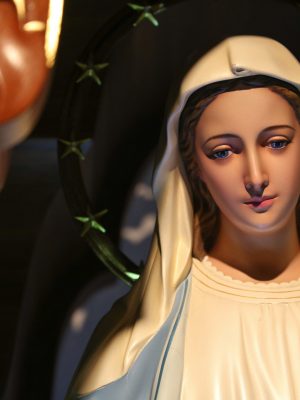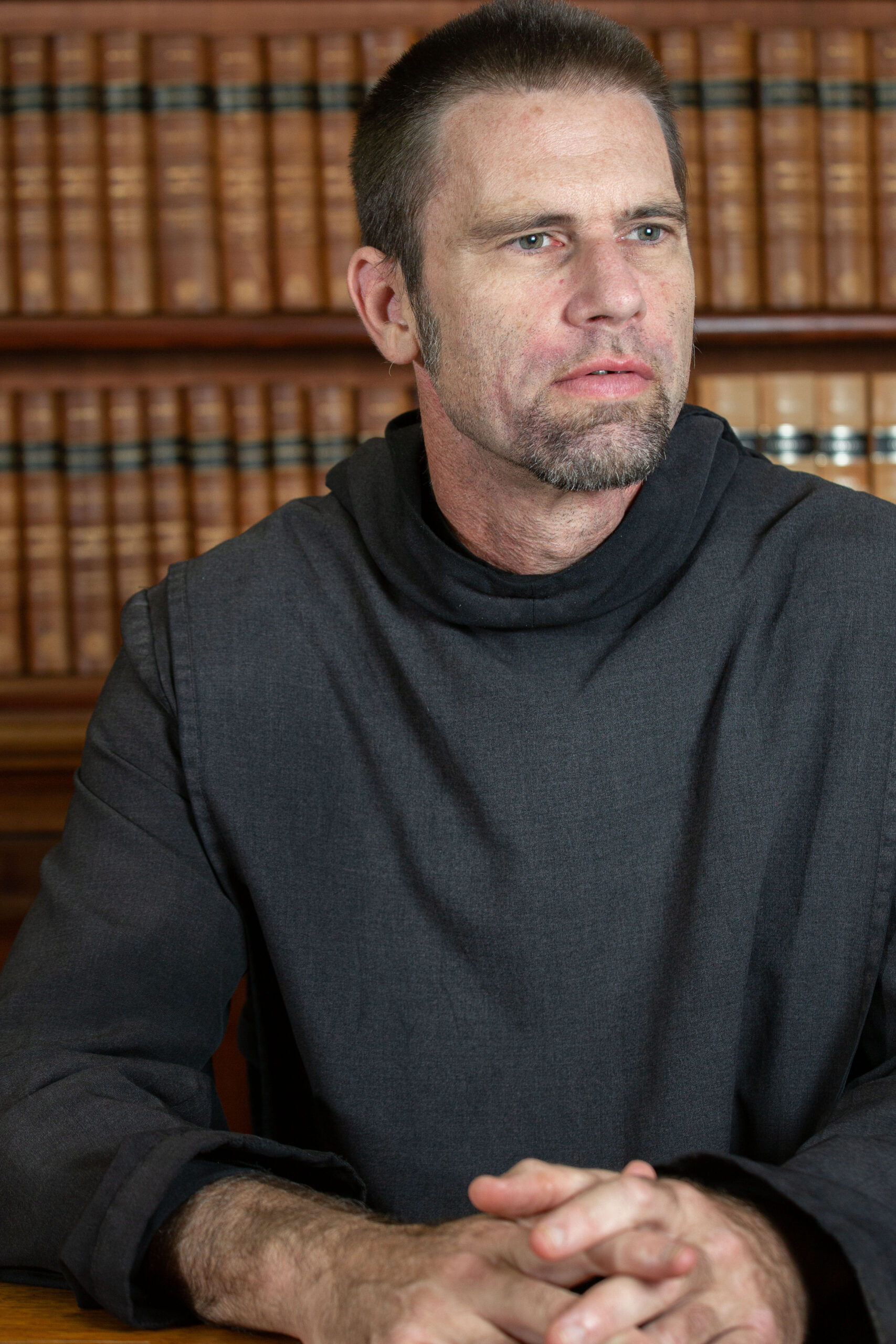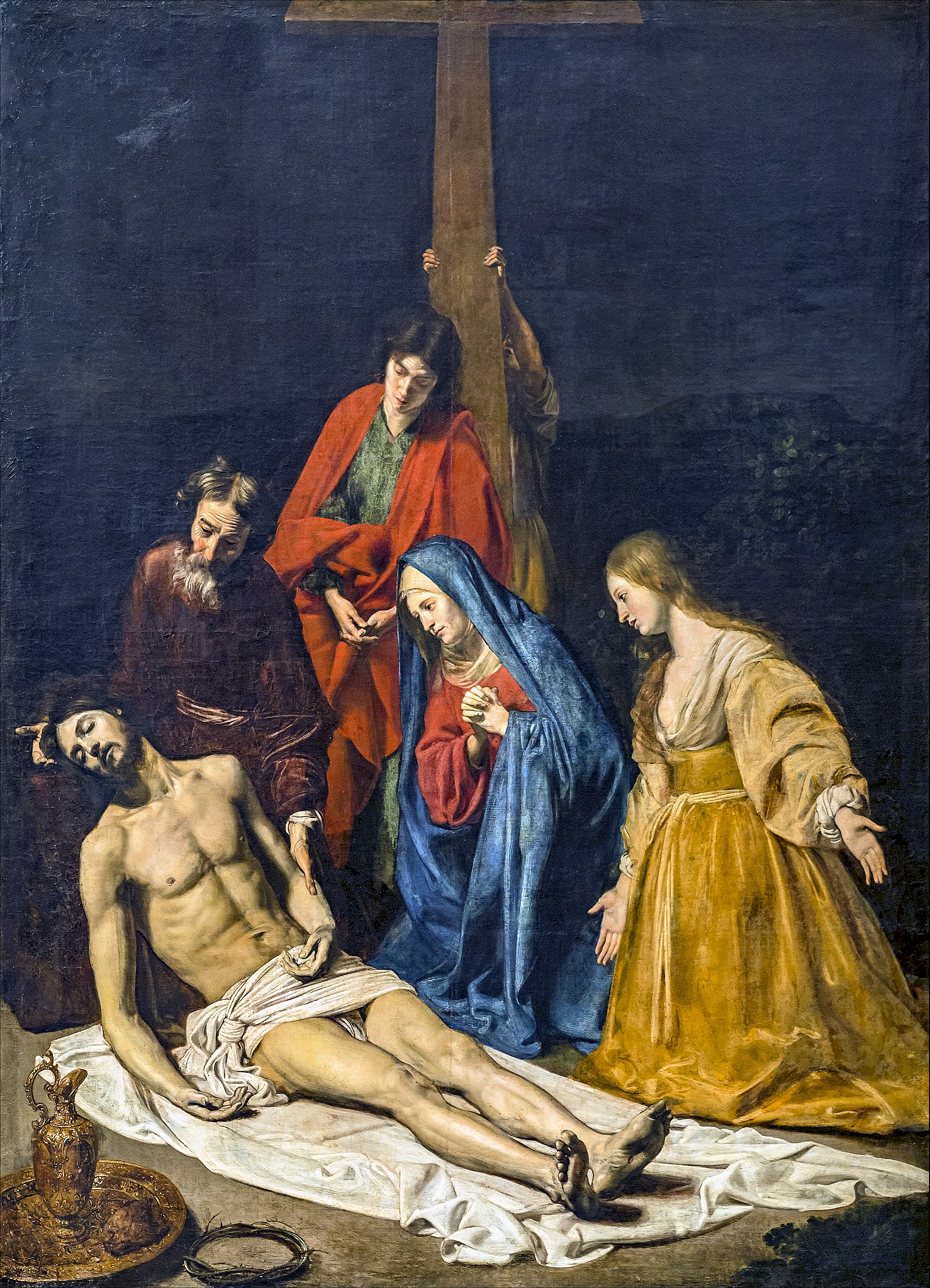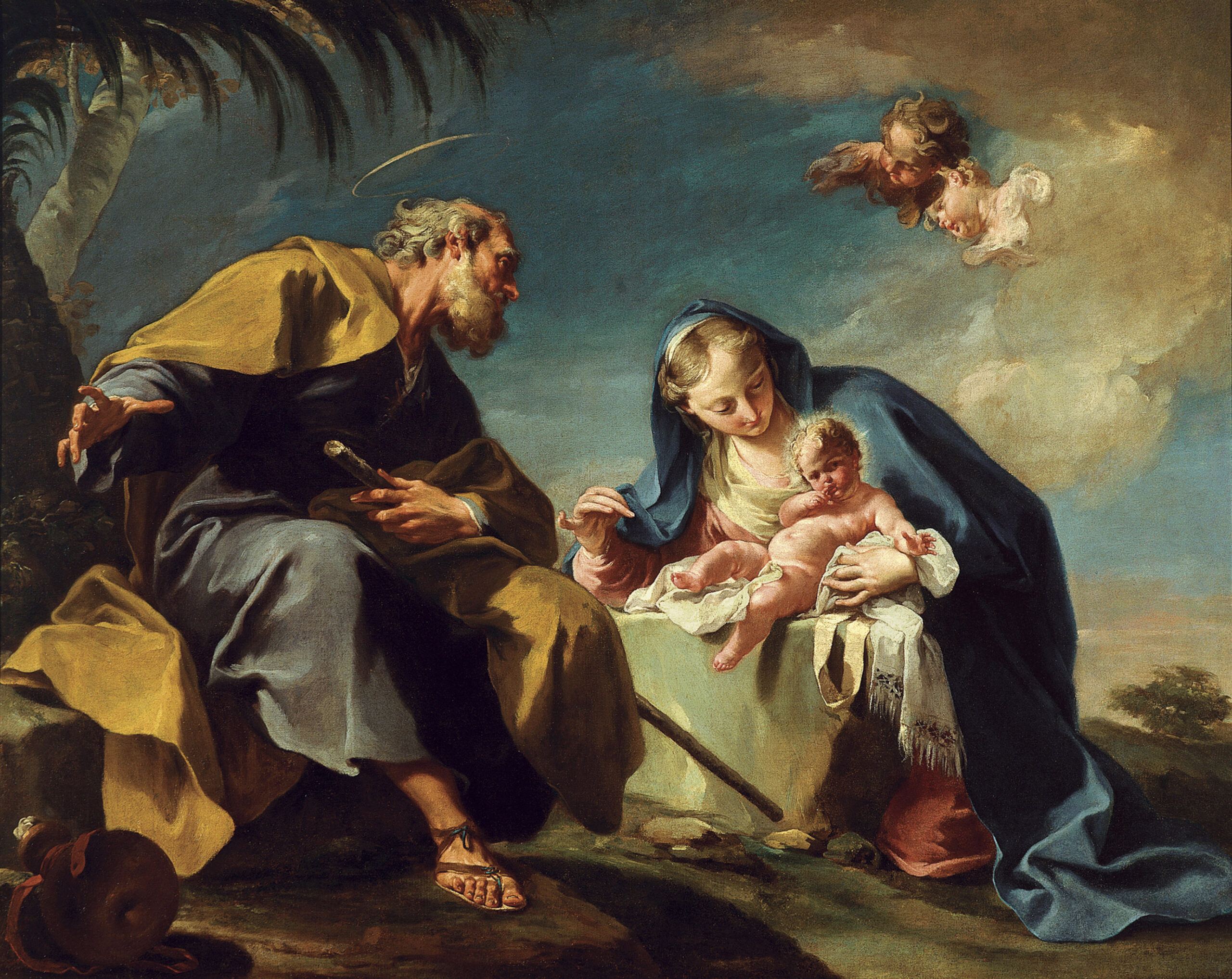How old was Mary when she conceived Our Lord according to St. Albert the Great?
The accounts of the nativity of Christ, found in the Gospels of Matthew and Luke, each present to us very beautiful images of the Virgin Mary. She was the humble and innocent handmaid of the Lord, whose ready obedience to the will of God made possible the Incarnation of Jesus—and therefore made possible also the salvation of the entire human race.
The Gospel accounts do not, of course, provide us with many details surrounding the person and life of Mary, nor are they intended to do so. But in many cases, these details have been augmented by ancient traditions, mystical revelations to saints, and also what can be deduced from reason and historical context.
Recently, I published for TAN Direction an article presenting Saint Albert the Great’s speculations on the color of the hair of the Blessed Virgin, taken from his 230 Quaestiones super “Missus Est.” Following enquiries from interested readers, I will now share a translation of Albert’s discussion on the question of the age of Mary when she was betrothed to Joseph and conceived our Lord, taken from the same magisterial work. It is to be noted that his view differs from the majority opinion (which places Mary’s age at about fourteen.) Albert suggests instead that there are sound reasons for supposing the Blessed Virgin may have been somewhat older than this, perhaps in her mid-twenties or even early-thirties.
Very curiously, Albert does not make any reference to the description of Mary’s life found in the Proto-Evangelium of James, although the text and the traditions it contains were in very wide circulation throughout the Middle Ages. According to this tradition, Mary served in the temple until she reached the age of about fourteen. Following this, and pursuant to the customs and laws of the time, her temple service ceased and she was betrothed to Joseph. Albert’s omission of any references to this may have been a deliberate choice on his part not to give credence to apocryphal sources.
It should be emphasized that Saint Albert offers his view (which admittedly seems to be unique to him) with all humility, and only as a speculative opinion. Nevertheless, as a Doctor of the Church and one who was credited as being the most learned man of his time, it remains worthy of respect and consideration.
In the following translation, the text contained in square brackets [] are editorial insertions added to complete or clarify the sense of the original.
From Quaestiones super “Missus Est” by Saint Albert the Great
Question XIV
Next, we shall consider the age of Mary when she was betrothed to Joseph, and when she conceived Our Lord.
I. [First proposal—that Mary had just reached marriageable age when she conceived Jesus]
Firstly, it seems that Mary should have been at least twelve years old. For this is the minimum legitimate age for contracting a marriage. And everything pertaining to the betrothal of Mary was ordained by the Holy Spirit, and therefore the lawful age must have been observed.
The works of the Lord are miraculous and astonishing; and, the more astonishing or miraculous they are, the more they merit our praise. Now, it is more astonishing for the perfection of virtue to be found in a youth than in an older person, and therefore it is also more praiseworthy. And since everything pertaining to the Blessed Virgin was praiseworthy and miraculous in the highest possible degree, it follows that she attained to a state of perfect virtue, and hence readiness to become the Mother of God, at the earliest possible age.
Similarly, the less any good thing is to be expected, the more pleasing it is when it happens to be found. And perfection of virtue is less to be expected in a young person than in an older person, and hence it is more pleasing when perfection of virtue is found in a young person. Since everything about the Blessed Virgin was as pleasing as it could possibly be; therefore it follows that perfection of virtue was evident in her from the youngest possible age. Furthermore, Mary was able to give free consent to God as soon as she had acquired the use of reason. It was thus most pleasing for her to give that consent as soon as she was able to do so [i.e. as soon as she could exercise adult reason.]
Again, it is characteristic of a powerful and merciful Being to bestow gifts. And the more promptly any giver gives, so much more are they to be esteemed as a giver [and so much more is their ready generosity displayed.] Hence the proverb declares: “Whoever gives a gift without hesitation, gives twice.” Now, God was the greatest Giver of all, and He bestowed His greatest possible gifts upon the Blessed Virgin. Hence it follows that He gave Her the gift of divine Motherhood with all promptitude and at the earliest possible time.
Furthermore, Saint Ambrose states that: “The grace of the Holy Spirit admits no delay in working its effects.” Therefore, on the side of the divine Giver, there could be no hesitation or deferral. Rather, the Holy Spirit was most eager to bestow its great gift to Mary, and [to use the words of Scripture], “leapt forth like a chariot to run its course.”[1] Therefore, the Holy Spirit gave the gift [of divine Motherhood to Mary] as soon as she was capable of accepting it, [i.e. just after she had reached the marriageable age of twelve.]
II. [Second proposal—that Mary had reached the years of full adulthood when she conceived Jesus]
But, contrary [to what has been advanced so far], it is to be noted that the Blessed Virgin was illuminated with the highest possible illumination. Therefore, she must have attained the full capacity to receive such illumination. This capacity to receive illumination relates to the intellect. Now, it is in people of more mature years that the intellect attains to its fullest powers, just as it is that in youthful people the senses are most acute. Therefore, since Mary’s capacity to receive the illumination of the Holy Spirit depended upon the capacity of her intellect, it seems fitting that she should have reached more mature years.
Supporting this idea is the fact that Sarah, who became the mother of Isaac in her old age, was a figure of the supernatural conception of Christ by Mary. For Sarah was seen to be incapable of conceiving children, because she had reached her ninetieth year. Now, since a figure should correspond in some way to what it symbolizes, it follows that Mary should have attained mature years when she conceived Jesus.
Furthermore, the marriage of an elderly man to a very young maiden seems to be incongruous. Rather, it is fitting that a young man marry a young woman, and that an older man marry an older woman. Hence it is written by the poet Ovid: “If you wish to marry wisely, then marry someone who is like yourself!” Now the marriage between Mary and Joseph was certainly organized in accordance with all wisdom. Therefore, since Joseph was already an elderly man, it seems that Mary should not have been extremely young, but of a more mature age.
Furthermore, when Christ was born, He received a human body that was utterly perfect in every respect. Since “like emerges from like,” it follows that Mary’s body must have reached full perfection and maturity when she conceived Jesus. But a human body does not reach its full development and perfection before the twenty-fifth year. Therefore, it seems fitting that the body of the Blessed Virgin had already reached this twenty-fifth year when she became the Mother of Our Lord.
Finally, it is a wise and accepted practice for judges, whenever there is uncertainty about any quantity, to assume the middle number as the most equitable solution. For example, if there was doubt about whether a person owed ten or twenty [pounds] to another person, the judge would settle the matter by declaring the debt to be fifteen [pounds.] Now, since uncertainty exists about the age of Mary when she conceived our Lord, it seems wise for us to follow the same procedure. We may consider the earliest and latest time when conception and betrothal are normally possible. The earliest age is [as has been noted] twelve years; and the latest possible age (according to many authorities) is fifty years. The mid-point between these two possible extremes is thirty-one years. Thus it seems prudent to assume that Mary was about this age when she conceived Our Lord.[2]
III. Albert’s conclusion
It is apparent that everything pertaining to the Blessed Virgin was most fitting and apt, both with respect to nature and grace. We therefore believe that she conceived Our Lord at the age at which a person has reached full stature and development of body [i.e. not in her earliest youth.] We believe also that she was betrothed to Joseph around the same time, approximately two months before she conceived Our Lord (according to the usual custom for engagements.)
IV. Albert’s response to objections to this opinion
Some may object, however, that it would be more marvelous and praiseworthy if Mary attained this full development in her early youth. But we respond to this by saying that nothing is truly praiseworthy and meritorious unless it comes about through free will. It therefore seems more meritorious for Mary to have had the opportunity to exercise her free [adult] will and judgment for a certain period of time. For it is only through the exercise of this freedom that virtue can be practiced and merits be accumulated.
Now, in order to be a fitting Mother for the Savior of the world, it is fitting that Mary had attained to the very pinnacle of virtue and meritorious works. And to allow time for this to happen, it seems that God would not bestow upon Mary the gift [of divine Motherhood] as soon as she was physically capable of receiving it. For God not only gave to her the very best gift, but gave it in a most fitting manner and at the most opportune time. For a gift cannot be considered perfect unless it is given at the perfect time. And, [contrary to the proverb quoted earlier,] hastiness in giving does not double the value of a gift at all, if this hastiness precedes the opportune time for giving and receiving.
[1] Psalm 18:6.
[2] The reasoning advanced here may strike many readers as rather dubious. It seems to reflect the belief that the optimal condition for anything was to be found at the mid-point between its two possible extremes (in this case, twelve and fifty.)







